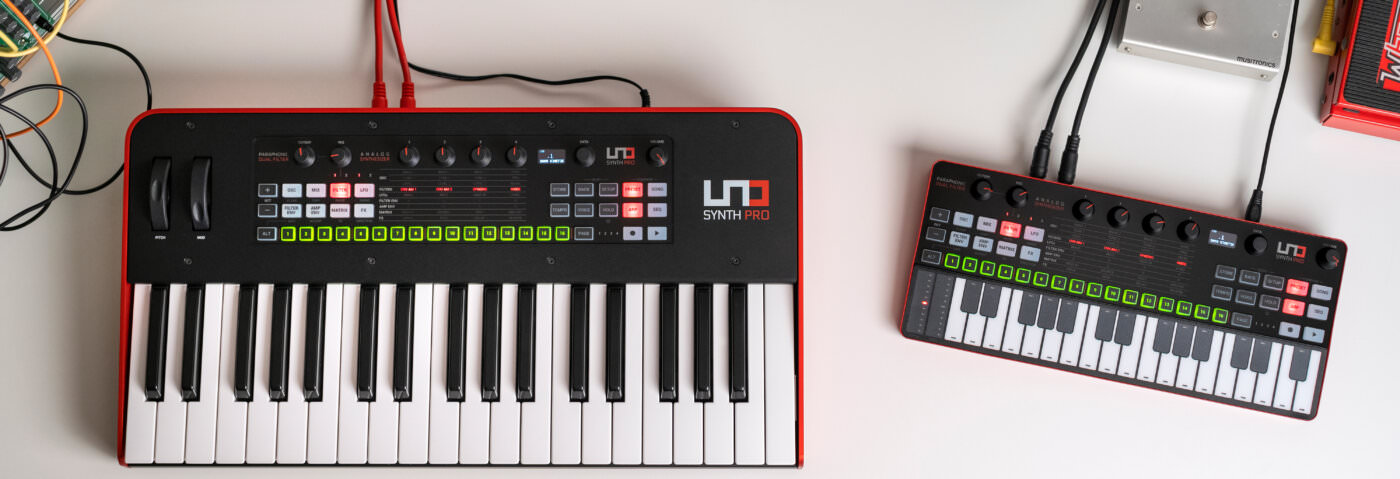IK Multimedia supercharges its budget UNO Synth into a powerhouse paraphonic instrument. Is it worth your pennies?
The affordable analogue synth market is a very crowded place. Almost absurdly crowded. You’d have to have something pretty unique to be able to compete with all of the quality instruments vying for your online checkout basket. Into this fray comes Italian company IK Multimedia, a formerly primarily software company that entered the hardware market a few years ago with the Volca-style UNO Synth. Now the company has emerged from the lab with a beefed-up version of their budget mono, the UNO Synth Pro. It even comes in two form factors: a full-size version with Fatar keys and a small footprint desktop model. You should probably go ahead and add them to your Amazon wish list now. Read on to find out why.
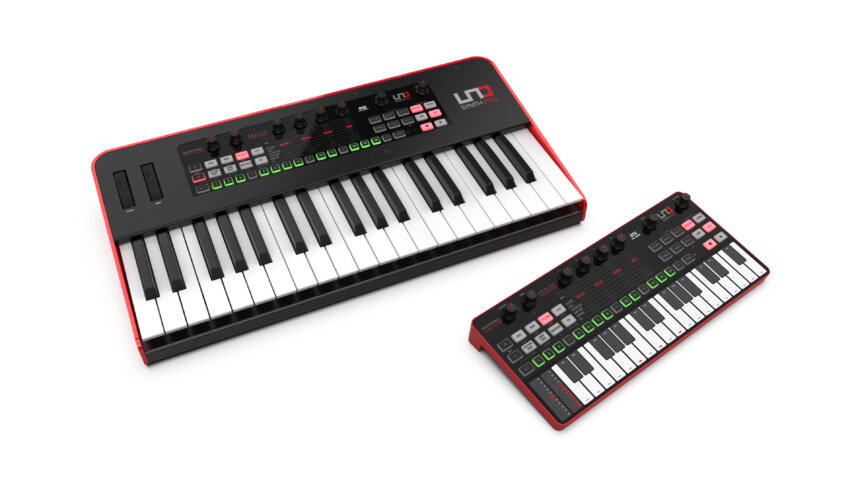
Then There Were Two
UNO Synth Pro is an analogue paraphonic synthesizer with three oscillators, two filters, two envelopes, two LFOs, a mod matrix, effects (both analogue and digital), a sequencer, and an arpeggiator. Right away, you might have noticed a couple of things in that brief list. Yes, like a Moog Minimoog there are three oscillators. Also yes, there are two filters, which is pretty unusual for synthesizer design. This right here should have you intrigued. It did us. Before we go any further though, let’s talk about the differences between the two units. Then we can come back to the similarities.
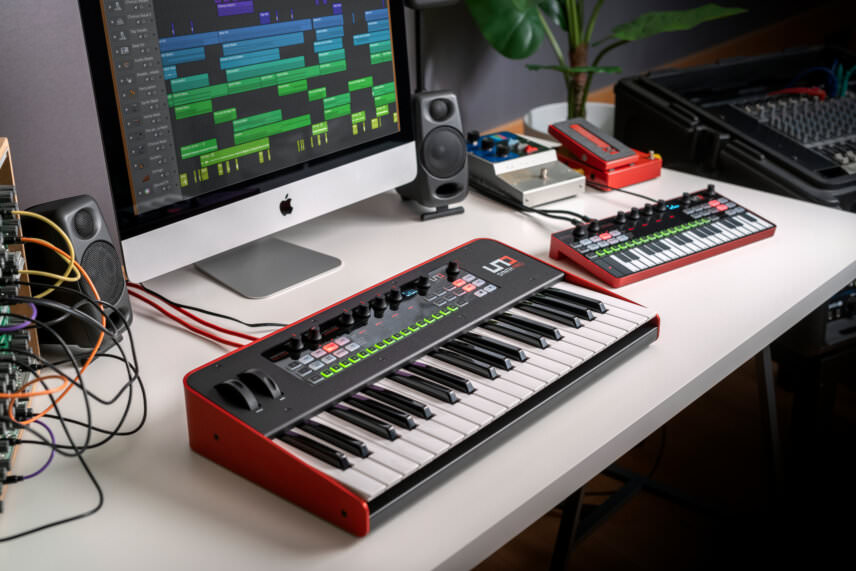
Let’s start with the UNO Synth Pro, the full-size version. It comes in a metal housing and feels hefty and sturdy. (Note that the push encoder on our unit was a little stiff compared to the desktop version but this could just be an anomaly.) The real star of the full-size unit, though, is the 37-key semi-weighted Fatar keybed. With so many synths going for mini or lightweight keys to save costs, it’s nice to put your fingers on a quality keybed. Pitch and mod wheels complete the package.
The desktop version is identical in terms of synthesis and connectivity, as well as the centre section. Where it differs is in the housing. Clearly taking its cues from the first UNO Synth, it has a plastic, lightweight body and a touch-sensitive key strip. Given the lack of tactile feedback, we’re not in love with the keys. The use of the pitch and mod sliders is fiddly as well.
Sound Synthesis Champion
Here’s the fun part. Usually, you get a synth, you know what to expect: an oscillator, maybe two, a filter, an envelope. However, IK Multimedia, working with the company Sound Machines and designer Erik Norlander (best known for helming the Alesis Andromeda team) have packed the UNO Synth Pro full of synthesis goodies.
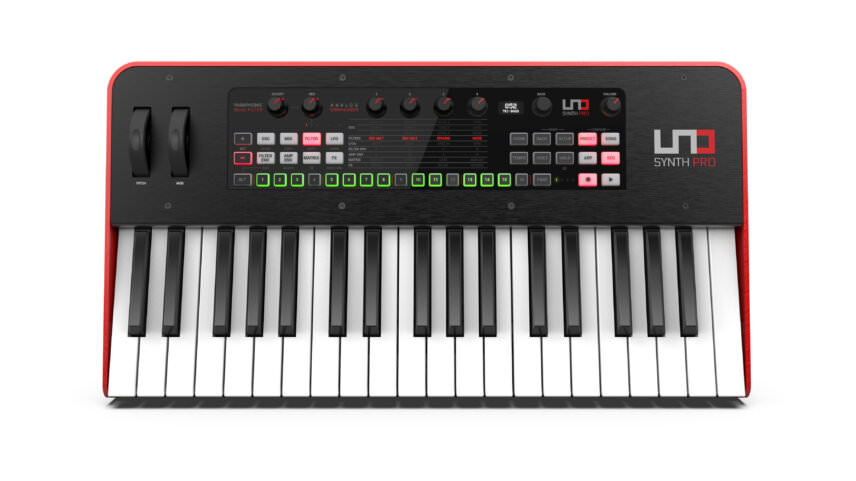
Let’s start with the oscillators. As we mentioned before, there are three of them. With three, you can make deep monophonic notes or, when in paraphonic mode, play three-note chords (note that there is only one filter section for the synth rather than one per voice, hence ‘paraphonic’). The waveforms are continuously variable on all oscillators, meaning you aren’t limited to just basic sawtooth, triangle, pulse or square waves – you can choose any point in-between or even modulate them). It’s also got white noise, ring modulation, pulse width modulation, oscillator frequency modulation, and sync. Pretty comprehensive.
The filter section is also worth getting excited about. With two filters – the 2-pole OTA multimode model from the original UNO Synth and an SSI 2/4-pole lowpass – there’s a lot you can do. These can be run in series or parallel, and the phase can be inverted, offering a total of 24 combinations. Add self-oscillation of the SSI filter and the synthesis options are pretty unbelievable. It also sounds a treat, chewy and squelchy.
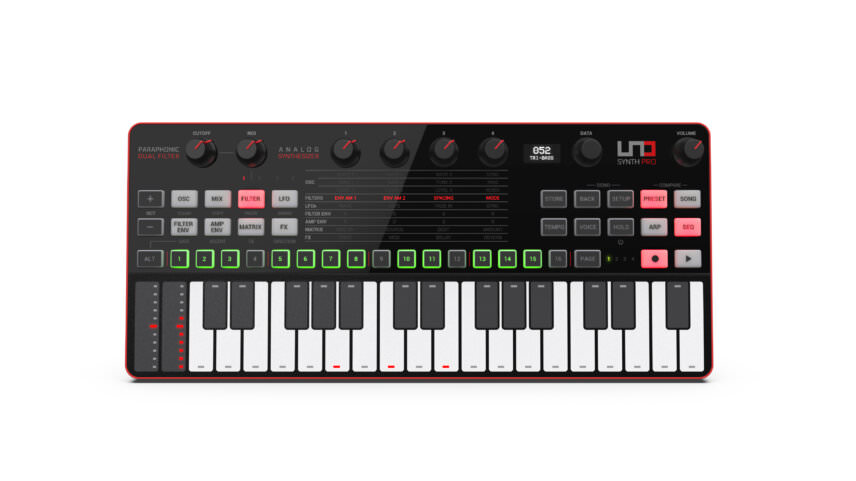
There are two envelopes, as mentioned, one hardwired to the filter and the other to the amp. However, they can also be used as modulation sources for pretty much anything on the synth via the Mod Matrix. In fact, pretty much anything can modulate anything else. There are two LFOs but also things like filter cutoff, oscillator tuning, noise, you name it. Even sequencer functions.
We really should mention the effects as well, as they’re an integral part of the sound of these machines. There’s analogue drive (ported from the UNO Synth) as well as a host of digital effects that includes reverbs, delays and modulation. These are all top quality and can be used to process external gear through a port on the back. (This routes through the filter as well.)
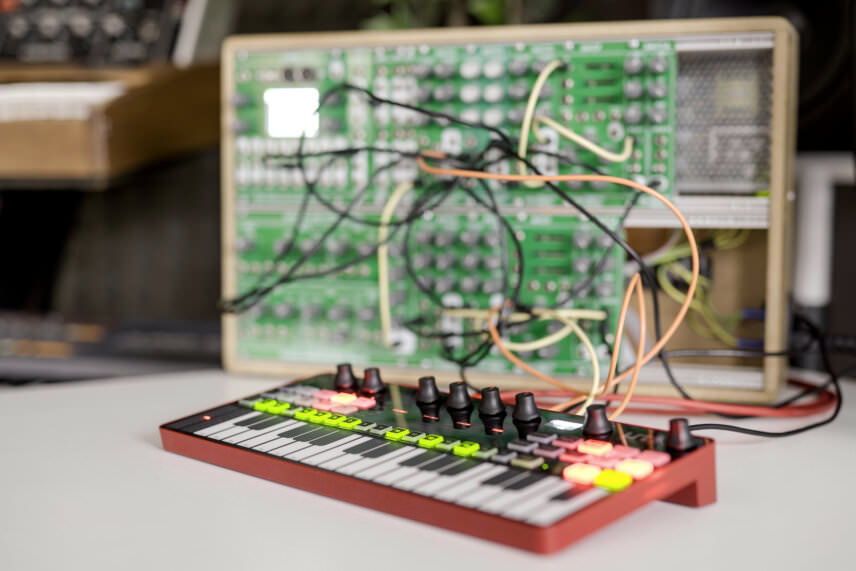
Along with the plentiful synthesis options, UNO Synth Pro features a 64-step chainable sequencer. There’s also an arpeggiator with 10 modes. Connectivity includes 5-pin DIN MIDI in and out, USB MIDI (and separate USB power for the Desktop), assignable in and out CV/Gate connections, and audio in as well as stereo outs and a headphone jack.
We All Have To Make Sacrifices
All of this power comes at a price though. When designing a synthesizer, a company usually starts with a target price. Then they make compromises to keep it within budget. Components, PCBs, keys, jacks – all these things cost money. IK Multimedia has clearly made the decision to choose synthesis options over one-knob-per-function accessibility.
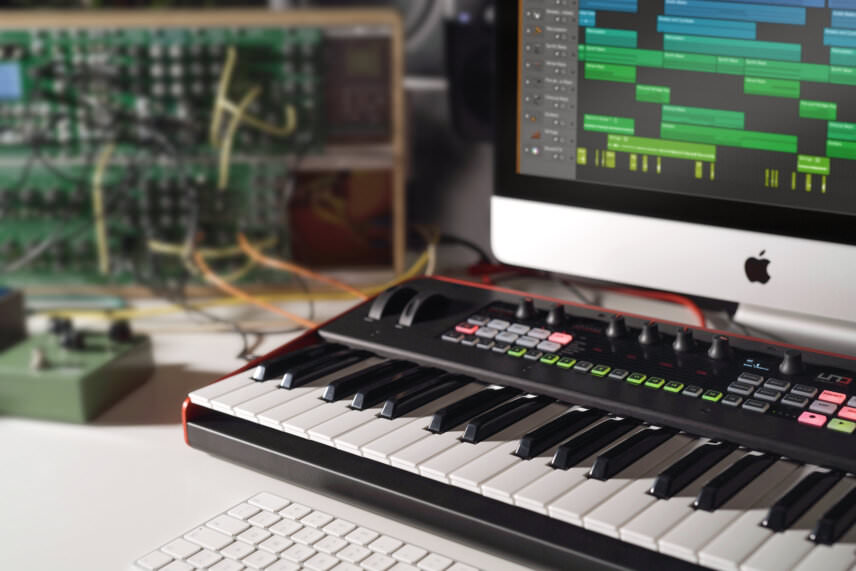
The trade-off is button and knob combinations. While cutoff and resonance have dedicated encoders, other parameters are accessed via pressing function buttons like Osc and Mix and then adjusting the four encoders along the top. There’s a grid of parameters that light up in red LCD when selected. It’s a fairly intuitive way to go about it and we were able to get up and running quickly without having to consult the manual. Yes, a big panel of knobs would have been lovely but this way is certainly easier on the credit card.
Pro Functions, Pro Price
Let’s talk price now. The full-size version sells for around €649.99 while the desktop version is €399.99. Honestly, the first time we saw these prices we were a little surprised. Compared to say a Monologue (€260) or even a similarly paraphonic Behringer Poly D (€579) they do seem on the high side. Remember that we’re paying for synthesis, though, and not necessarily for size. With three oscillators and two filters, you get a lot of bang for the buck. The Fatar keyboard on the full-size also adds to the total. However, if you’re feeling the pinch after too much GASing out, it’s understandable that you might be wary of the price.
The UNO Synth Pro is a full-featured and great-sounding analogue synth with a ton of synthesis options. Despite the lack of knobs, it’s a joy to program and honestly, once you get the hang of it you won’t even notice it. Obviously, keyboardists will want to give the full-size version a play. It’s a waste in our inept hands but pros will dig it. For the rest of us, the desktop model should be good enough. The touch panel keys are unfortunate but it’s easy enough to use as a sound module via MIDI.
All in all, we’re really into the UNO Synth Pro. We love the synthesis options, it’s got tons of character, and can we just say it’s nice to have a new synth in 2021 that isn’t trying to copy something from 30 years ago? Kudos to IK Multimedia for a job well done.
The Verdict
Price: €649.99/€399.99
Purchase: IK Multimedia UNO Synth Pro
The Final Word
Plentiful synthesis options and bags of character help these two stand out from the crowd.
